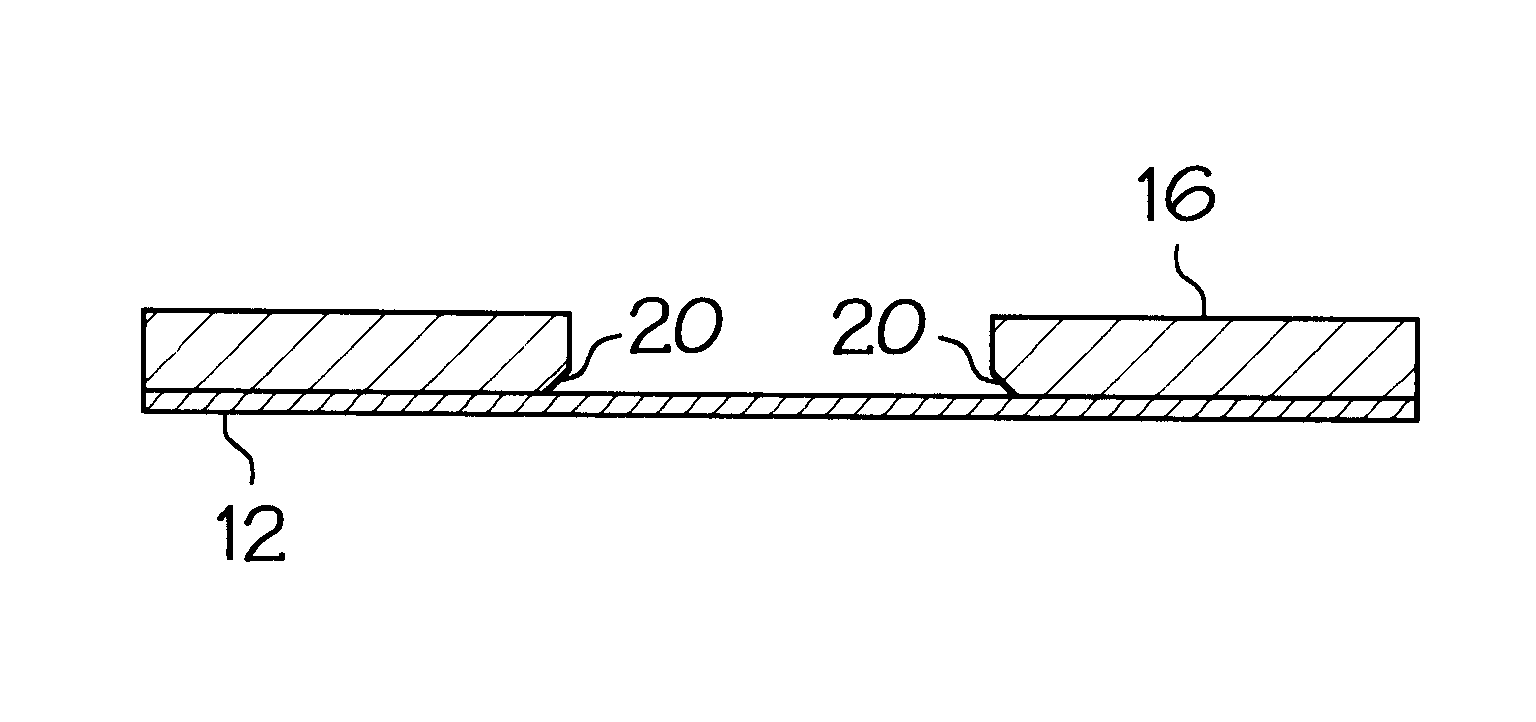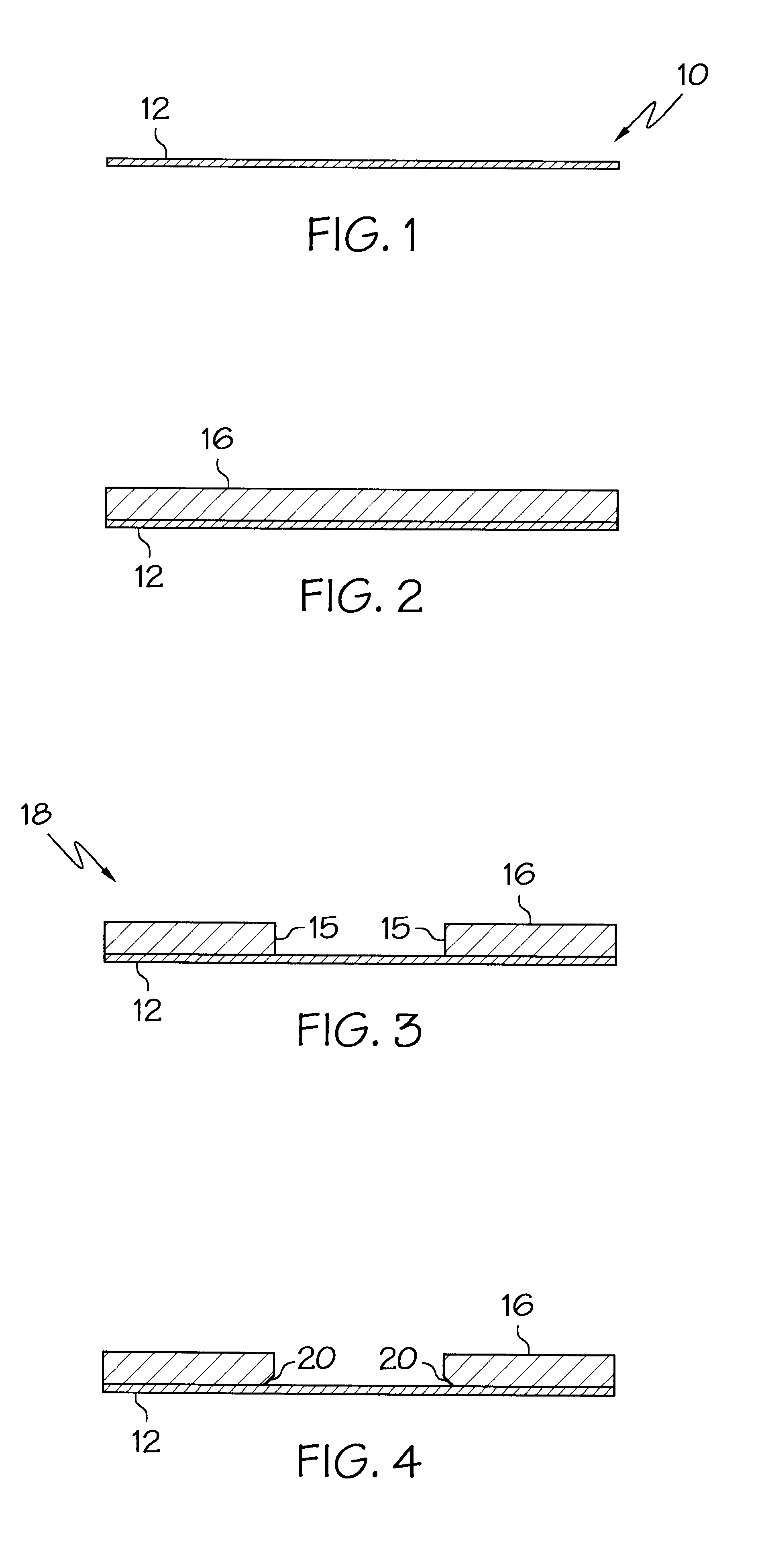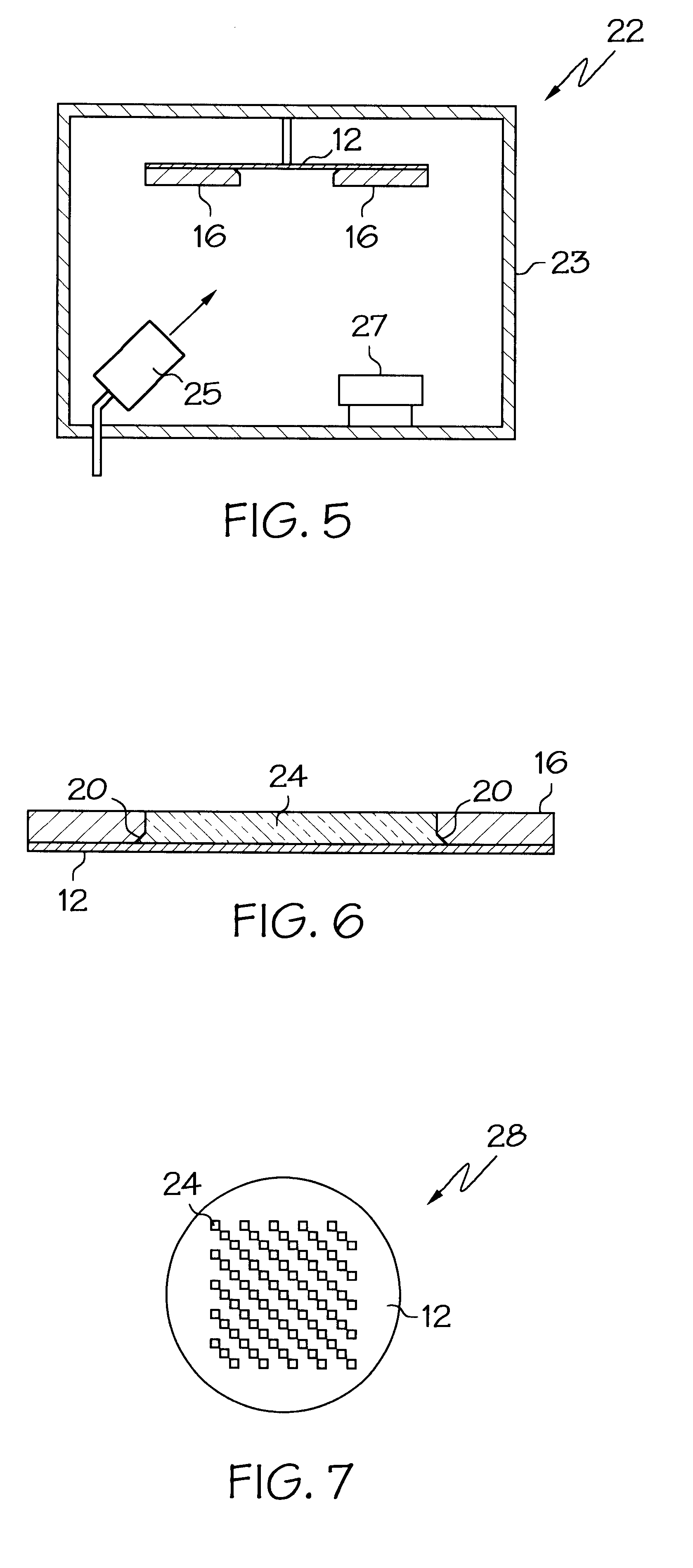Method for making monolithic patterned dichroic filter detector arrays for spectroscopic imaging
a detector array and dichroic filter technology, applied in the field of making an improved detector array, can solve the problems of weakening the walls formed by the photoresist, the art of microlithography has been limited to the field of microelectronics, and the filter art has not produced thin filters with well-defined edges, etc., and achieves the effect of weakening the walls
- Summary
- Abstract
- Description
- Claims
- Application Information
AI Technical Summary
Problems solved by technology
Method used
Image
Examples
Embodiment Construction
Referring now to FIG. 1, it will there be seen that the first step in an exemplary embodiment of that includes cleaning and preparing a wafer 12 by conventional means. Rouge and acetone are typically employed in a well-known way resulting in the prepared wafer 12 shown in FIG. 1 and is denoted 10 as a whole.
A suitable photoresist, such as Shipley PR1818, for example, is then applied. In FIG. 2, which depicts the second step of the novel process, the photoresist is denoted by the reference numeral 16; it is about 0.8-2.5 microns in thickness. Photoresist layer 16 is applied by a conventional spin technique, well known in the art, and is then baked to remove solvents therefrom in the well-known way.
The assembly is then contact or proximity printed to a mask for one of the three primary colors in the case of dichroic filters for color measurement, or one of several filters representing a set of coefficients in the spectral model. For chemical sensing the unmasked part of the photoresis...
PUM
| Property | Measurement | Unit |
|---|---|---|
| thickness | aaaaa | aaaaa |
| width | aaaaa | aaaaa |
| included angle | aaaaa | aaaaa |
Abstract
Description
Claims
Application Information
 Login to View More
Login to View More - R&D
- Intellectual Property
- Life Sciences
- Materials
- Tech Scout
- Unparalleled Data Quality
- Higher Quality Content
- 60% Fewer Hallucinations
Browse by: Latest US Patents, China's latest patents, Technical Efficacy Thesaurus, Application Domain, Technology Topic, Popular Technical Reports.
© 2025 PatSnap. All rights reserved.Legal|Privacy policy|Modern Slavery Act Transparency Statement|Sitemap|About US| Contact US: help@patsnap.com



